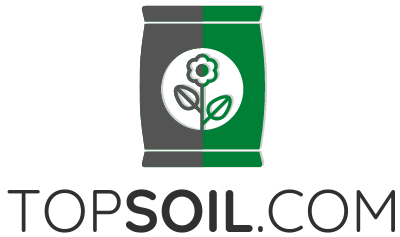If you’re trying to grow a lush green lawn, one of the most important decisions you’ll make is choosing the right type of soil. Many homeowners find themselves stuck choosing between lawn soil vs topsoil, but these two aren’t the same and picking the wrong one can lead to patchy growth, drainage issues, or wasted time and money.
In this article, we’ll break down the real-world differences between lawn soil and topsoil. You’ll learn when to use each, how they affect grass growth, and even how to blend them for the best results.
We’ll also include expert insights, data-backed performance comparisons, and simple explanations that anyone regardless of age or experience can understand.
Table of Contents
ToggleWhat Is Lawn Soil?
Lawn soil is a pre-mixed, nutrient-rich soil designed specifically to support healthy lawn growth. It often contains a mix of screened topsoil, compost, peat moss, sand, and sometimes fertilizer. Its light and fluffy structure makes it ideal for promoting grass seed germination and deep root development.
Commercial lawn soil is typically used for:
- Starting new lawns from seed or sod
- Repairing bare or thin patches in the yard
- Topdressing to refresh and revitalize an existing lawn
Lawn soil is engineered to support the unique needs of turfgrass, which includes consistent drainage, root aeration, and nutrient availability. According to a 2022 report from the American Society of Agronomy, using a grass-specific soil blend can improve germination rates by up to 25% compared to untreated or native soils.
What Is Topsoil?
Topsoil is the uppermost layer of natural earth, typically the top 2–8 inches. It is formed naturally over thousands of years through the breakdown of organic matter, minerals, and microbial activity. Because topsoil is sourced from different locations, its quality and composition vary significantly.
You’ll often find topsoil being used for:
- Filling low or uneven spots in the lawn
- Providing a foundational layer before planting grass
- Landscaping and garden beds
However, not all topsoil is created equal. Some may contain high amounts of clay or sand, limiting its usefulness for grass growth. In a 2023 Purdue University study, lawns grown on unamended topsoil had 30% less root mass after 90 days compared to those planted on amended lawn soil.
Main differences of Lawn Soil vs Topsoil
Let’s break it down in a side-by-side comparison with detailed context
| Feature | Lawn Soil | Topsoil |
| Composition | Engineered mix (screened topsoil, compost, peat moss) | Natural layer of earth (composition varies) |
| Purpose | Designed for turfgrass growth | General landscaping and planting |
| Texture | Fluffy, drains well | Can be sandy, loamy, or clay-heavy |
| Nutrients | Consistent, high nutrient levels | Unpredictable nutrient content |
| Cost | $40–$70 per cubic yard | $15–$30 per cubic yard |
While lawn soil provides a nutrient-dense medium ideal for grass, topsoil’s value lies in its versatility and affordability. If your lawn soil is compacted or infertile, layering quality topsoil is a good starting point, but grass won’t thrive without nutrient support — which lawn soil offers.
When to Use Lawn Soil vs Topsoil
For New Lawns:
If you’re laying sod or starting from seed, lawn soil is your best friend. It provides a soft, nutrient-rich base that encourages quick root penetration and fast growth. A Cornell University turf management study found that new lawns seeded on lawn soil established in 20% less time compared to those on untreated soil.
For Existing Lawns
Topsoil is better for foundational work, such as leveling or filling dips. However, it needs to be amended with compost or fertilizer if you’re expecting grass to grow directly in it.
For overseeding your lawn repair, a thin layer of lawn soil (¼ to ½ inch) can significantly enhance seed-to-soil contact, moisture retention, and nutrient availability.
Practical Example of Using a Lawn Soil and Topsoil Blend
Let’s look at a real-world scenario. A 5,000 sq. ft. lawn in Dallas, Texas, suffered from poor drainage and yellowing patches. The homeowner originally used bulk topsoil to level the ground and seeded directly into it. After two months, only 60% of the lawn had filled in.
After testing the soil and finding a lack of nitrogen and poor drainage, the homeowner mixed 60% topsoil with 40% lawn soil and re-seeded the thinnest areas. Within four weeks, the remaining lawn filled in with visibly healthier and greener grass. This mixed approach saved over $150 compared to using lawn soil alone across the entire yard.
Grass Types and Soil Compatibility
Grass type matters when choosing soil:
- Cool-season grasses
Cool-season grasses like Kentucky bluegrass and fescue grow in loamy, well-balanced lawn soil because this type of soil retains moisture well while providing adequate drainage.
These grasses grow actively during cooler months and require nutrient-rich soil to support dense root systems and lush green blades.
A soil pH between 6.0 and 7.0 optimizes nutrient uptake for these grasses, so regular soil testing and amendments like lime can be beneficial.
- Warm-season grasses
Warm-season grasses such as Bermuda and Zoysia perform best in sandy topsoil that drains quickly, preventing water logging and root rot in hot, humid conditions. These grasses are adapted to thrive during warmer months and need soil that warms up fast in spring.
Sandy soils with good aeration also help roots penetrate deeply, increasing drought tolerance. Adding organic matter can improve nutrient content without sacrificing drainage.
How to Apply Soil to Your Lawn
Step-by-step process:
- Mow your lawn and remove debris.
- Spread soil evenly using a shovel and rake, or a lawn spreader for larger areas.
- Limit soil depth to no more than ½ inch if topdressing.
- Water thoroughly to help the soil settle.
- Repeat annually in spring or fall for maintenance.
Cost Analysis and Budget Planning
When planning soil purchases for your lawn, it’s important to balance cost with quality to get the best results without overspending. For example, treating a 2,000 sq. ft. lawn usually requires about 4 to 6 cubic yards of soil, depending on the depth you want to apply.
- Lawn Soil (bagged)
Typically sold in 1.5 cubic foot bags at around $6 each. For 2,000 sq. ft., you’d need roughly 90 bags to cover a ½-inch layer, which totals about $540. While convenient and consistent in quality, bagged lawn soil tends to be pricier.
- Topsoil (bulk)
Bulk topsoil costs about $25 per cubic yard, so 6 cubic yards would cost around $150. Bulk topsoil is more affordable but often requires testing and amendments to ensure it supports healthy grass growth.
- Blended Option
Combining 3 cubic yards of bulk topsoil with 3 cubic yards of compost or lawn soil can cost about $300. This option balances affordability and soil quality, improving nutrient content and drainage while reducing overall expenses.
Carefully considering these options helps you choose a budget-friendly approach that doesn’t compromise your lawn’s health.
Common Mistakes to Avoid
- Using garden soil instead of lawn soil
Garden soil is often much denser than lawn soil and tends to retain excessive moisture. This can create waterlogged conditions that suffocate grass roots and promote fungal diseases. Lawn soil is specially formulated to provide better drainage and aeration, allowing roots to breathe and grow strong. Using garden soil for your lawn can lead to poor turf health and patchy growth over time.
- Over-applying soil
Applying more than half an inch of soil at once can smother your grass by blocking sunlight and reducing air circulation. Thick layers of soil prevent proper water infiltration and can cause the grass to struggle or even die. To avoid this, it’s best to apply soil in thin layers, ideally ¼ to ½ inch, allowing the grass to thrive while gradually improving soil quality.
- Not checking pH levels
Grass prefers a slightly acidic to neutral pH, typically between 6.0 and 7.0. If the soil is too acidic or alkaline, essential nutrients become unavailable to the grass, leading to weak growth and discoloration. Regular soil testing helps identify pH imbalances, and applying lime or sulfur can effectively adjust the pH to a range that supports healthy turf development.
- Ignoring drainage
Poor drainage causes water to pool around grass roots, depriving them of oxygen and increasing the risk of root rot and disease. To improve drainage, lawn soil can be amended with materials like sand or perlite, which increase aeration and water movement through the soil. Proper drainage ensures healthier roots, stronger grass, and a more resilient lawn overall.
Conclusion
So, which is better? lawn soil vs topsoil? The answer truly depends on the specific needs of your lawn. Lawn soil works best when planting new grass, repairing patches, or improving overall lawn health,
while topsoil is ideal for leveling ground or creating a foundational layer. For many homeowners, blending both provides a smart balance between cost and performance. Choosing the right soil is about more than just picking what’s cheapest or most convenient; it’s about laying a strong foundation that helps your grass grow green, stay healthy, and grow longer.
If you’re serious about achieving a beautiful lawn, don’t hesitate to test your soil, experiment with blends, and amend as needed until you find the perfect mix that suits your landscape.






